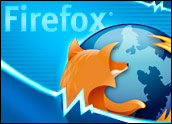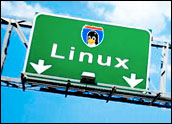
In a move to gain market share in the corporate world, Mandrakesoft today announced two new products geared toward the enterprise. Its new “enterprise-ready” Corporate Server and Corporate Desktop take the company outside its main focus — making Linux available to the largest number of users — and into a realm of new opportunity.
This is not Mandrakesoft’s first shot at the enterprise. The company introduced its Corporate Server in 2000, followed by a second version in early 2003. But the company said its third version has been thoroughly overhauled to include some new features. Meanwhile, this introduction marks the first Corporate Desktop for the Linux vendor.
“It’s quite challenging to design enterprise products, because the needs of businesses are more difficult to assess and to cater [to],” said Francois Bancilhon, Mandrakesoft CEO. “But we’ve listened to our customers, we’ve dedicated the necessary time and resources to the task, and now I must say we’re quite proud of what has been achieved.”
Fast Start
Some of the achievements Bancilhon referred to are features like auto-detection and numerous configuration wizards designed to help corporate users get up and running as quickly as possible.
The company said the user-friendly interface does not lock away administrators from system internals. Instead, they have full latitude for adapting Corporate Server and Desktop to specific environments.
The new Corporate Server is based on a 2.6 kernel and is compatible with IBM’s database server, DB2. Tools like DrakPark and Mandrakeonline Pro are designed to facilitate site-wide software maintenance based on Mandrakelinux’s urpmi system.
“I think going for Mandrakesoft Corporate Server and Corporate Desktop is a pretty coherent business decision, even more than just going for Linux, which everybody is doing or about to do anyway,” Bancilhon said.
Anticipating a Wave
Why is Bancilhon so confident? Corporate Desktop was made for the coming wave of Linux adoption: Linux on the desktop. Corporate Desktop works with Corporate Sever and can be made to fit in any heterogeneous environment, according to the company.
This one-two server-desktop punch could pay off, according to analysts.
IDC projects the overall revenue for desktops, servers and packaged software running on Linux will exceed US$35 billion by 2008. Additionally, IDC forecasts that while Linux remains a minority player on desktop PCs, Linux penetration in that realm will reach $10 billion in annual revenues on 17 million units shipped globally by 2008.
Finally, servers running Linux as either a primary or secondary operating system is a market forecast to exceed $11 billion and 3.3 million units by 2008, with an installed base of more than 9.7 million units and a compound annual growth rate of 24.5 percent worldwide.
Remaining Questions
Clearly, there is a market opportunity to provide an alternative desktop, said Steve O’Grady of research firm Red Monk. O’Grady told LinuxInsider that he has very few questions regarding the technical components of Linux desktops and servers. He does have cultural questions, however.
“Can users adapt to applications that may sort of look the same but aren’t the same as Windows?” he asked. “If you have a fleet of Windows desktops, you may have a tremendous cost-savings opportunity by migrating to a Linux provider, but there’s a migration cost to get there. It’s all the post-migration service, like ongoing support and training — that is the real question mark.”
O’Grady said Mandrakesoft can certainly gain market share with its Corporate Desktop, but he anticipates that the company will have a difficult time competing with larger, more established players that came first and that are better prepared to answer the training and support questions.
“Novell has a very good reach because it has a ton of channel partners it can tackle,” O’Grady said. “Red Hat and Sun have built up a fairly sizable support services component. Those large companies are typically a little bit better positioned to offer the service and support than some of the smaller folks.”




















































